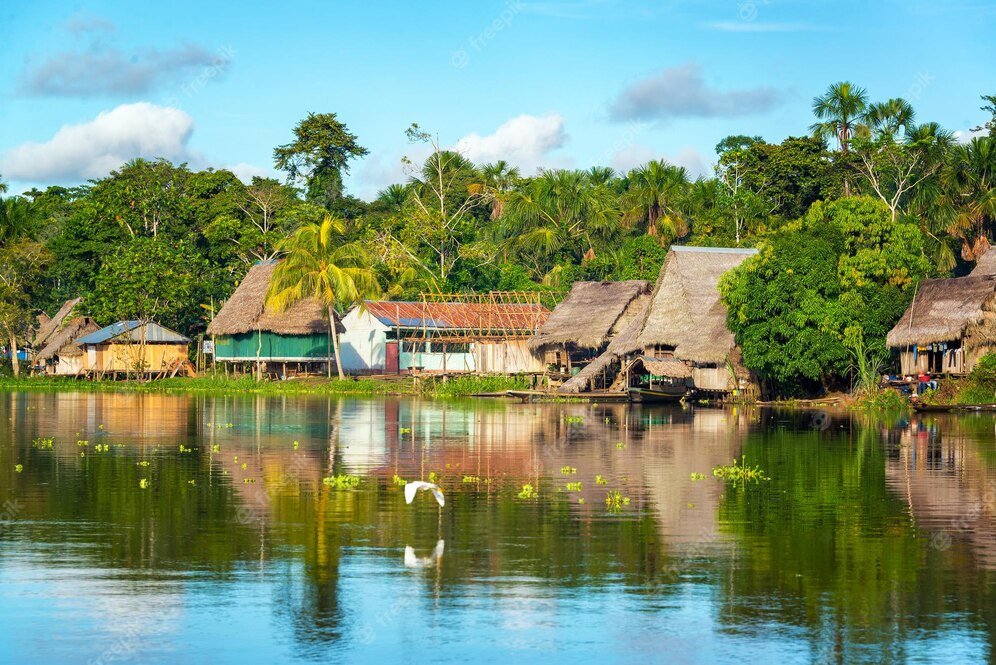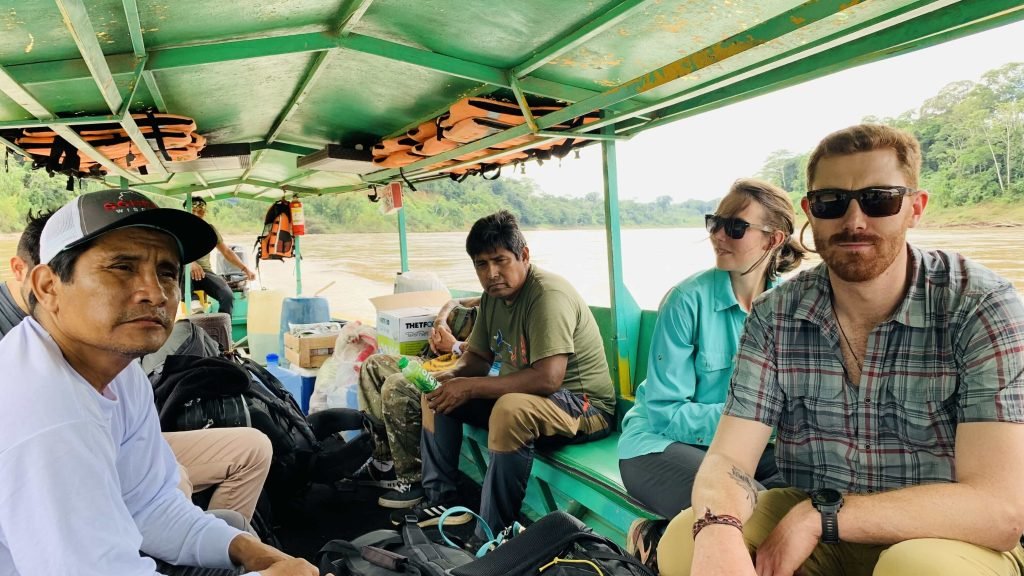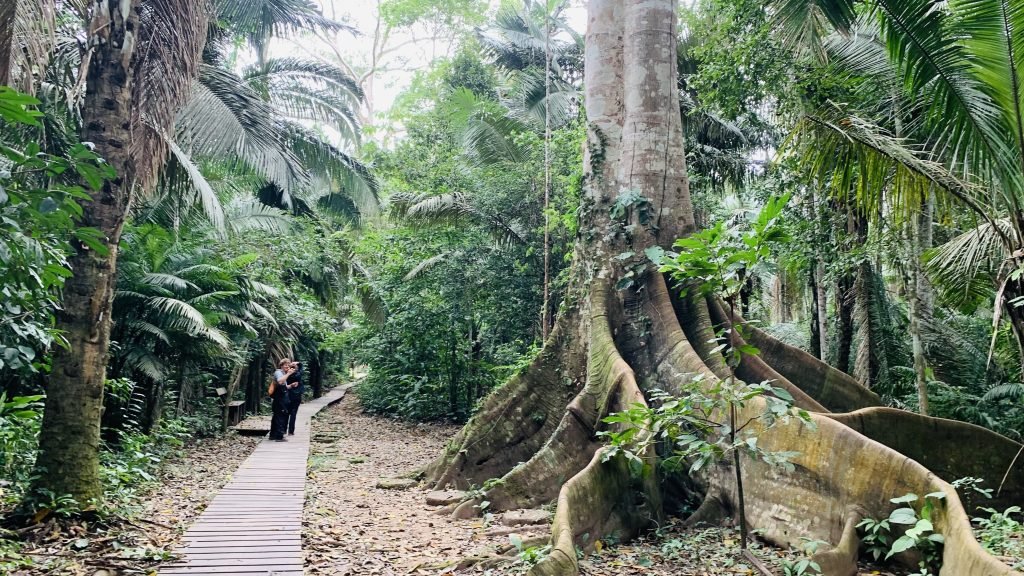The Complete Guide to Visiting the Peruvian Amazon
Provided with amazing wildlife, vibrant flora and unique local jungle communities, the Peruvian Amazon offers exciting adventures for any traveler who dares to visit this iconic and mysterious destination.
Make the decision to dive into the lush Amazon rainforest and discover the areas to explore, the best time to visit, travel essentials and everything you will see in this wonderful destination.
How large is the Peruvian rainforest?
The Amazon rainforest covers an area of 2.1 million m² (5.5 million km²) and approximately 13% of this area is found in the territory of Peru.
Although it represents 60% of the entire country, only 5% of its population lives there. However, learning about the unique culture of the indigenous people of the Peruvian Amazon is one of the best experiences to have there and, in general, a great reason to add the jungle to your travel itinerary.
The best destinations in the Peruvian Amazon jungle
The Peruvian Amazon is a vast area and, depending on which part you visit, you will get different interesting experiences.
Let’s take a look at the three most popular destinations travelers choose for their adventure through the Peruvian Amazon.
Puerto Maldonado is a city in southeastern Peru where the Madre de Dios River intersects with the Tambopata National Reserve. The waterways surrounding Puerto Maldonado allow you to enter a very diverse and prolific region, where you will be able to spot a great variety of species in their natural environment.
Although it is possible to organize an excursion that includes more adventurous activities, the area is more popular with travelers who prefer to stay in a jungle lodge.
Hidden deep in the Peruvian jungle, Iquitos is one of the best places in South America to observe tropical wildlife and experience an authentic Amazon rainforest.
Accessible only by plane, Iquitos is the most adventurous and accessible option for exploring the jungle. In fact, Iquitos is the only place in Peru where you can visit the actual course of the Amazon River and not a tributary.
Because of its unique location, Iquitos offers the opportunity to see rare wildlife, such as the pink river dolphin, and visit indigenous villages.
When hiking along the Amazon River, you will almost always have encounters with friendly locals who inhabit the area.
With so many unique birds in Peru, the park is one of the best places to go birding and enjoy various activities, such as hiking and meeting members of the local communities.
Visiting the area requires a permit, so plan your trip several months in advance.

What is the best time to visit?
The Amazon is a year-round destination and enjoys a warm, tropical climate with high humidity. Because the Amazon is a tropical rainforest, the weather in the vast expanse of jungle experiences a certain level of rainfall throughout the year.
Traveling in the low rainy season (May through October) usually means that most of the hiking trails are easily accessible and you can enter the jungle without major inconvenience although there is really no time of year when rainfall creates major problems when visiting the Amazon.
It is also possible to visit the country during the rainy season (from November to April). Some trails may be muddy, which means that you will have greater inconvenience to travel the jungle trails.
Tips for traveling to the Peruvian Amazon
Thinking about what to bring on your trip to the Amazon rainforest can be a daunting task, especially for first-time visitors.
Here are some travel tips to help you plan an enjoyable adventure.
What to bring?
Due to its high humidity, the Amazon is a perfect environment for mosquitoes, so be sure to bring mosquito repellent.
In addition to the basics (waterproof backpack, sunscreen and a small first aid kit), here are some other essentials you should bring on your trip.
Clothing
Remember that temperatures in the jungle are quite high, regardless of the season.
The key to success when wondering what to wear in the Amazon jungle is to have dry clothes, long-sleeved shirts, pants (zippered) for the outdoors and a t-shirt recommendably in light colors.
Footwear
For visiting the Amazon rainforest, rubber boots (usually provided by the lodge) or hiking boots are a good choice. For free time at the lodge, you can bring flip-flops, sandals or regular shoes.
Electronics
Electricity is available at the lodges only at certain times of the day so you can charge your devices. Some useful things to pack include your camera, as well as a good pair of binoculars and extra memory sticks so you don’t have to delete photos at the last minute.
Documents
As with most destinations, don’t forget to bring your passport, as well as any tickets or payment confirmations you may need during the trip.
Security
The Amazon rainforest is a safe destination as long as you take precautions such as checking the availability of life jackets on the boat, avoiding tap water and carrying personal medication (if necessary).
Vaccinations
At present, it is not mandatory to be vaccinated against malaria and yellow fever, but it is advisable to have vaccinations to prevent any circumstance, so it is advisable to make an appointment with your doctor before departure, apply sufficient insect repellent and wear long-sleeved shirts and pants.
Ready to explore the untamed and majestic Amazon rainforest?
Peru’s Amazon rainforest, one of the most biodiverse places on the planet, offers some of the most impressive wildlife and one of the most varied jungle adventures in the world.
Whether you are an adventurous traveler or a nature lover, the Amazon rainforest is a destination that will give you an experience you will never forget. Don’t hesitate any longer and visit us, the Amazon rainforest is waiting for you.






